Firewood burning temperature
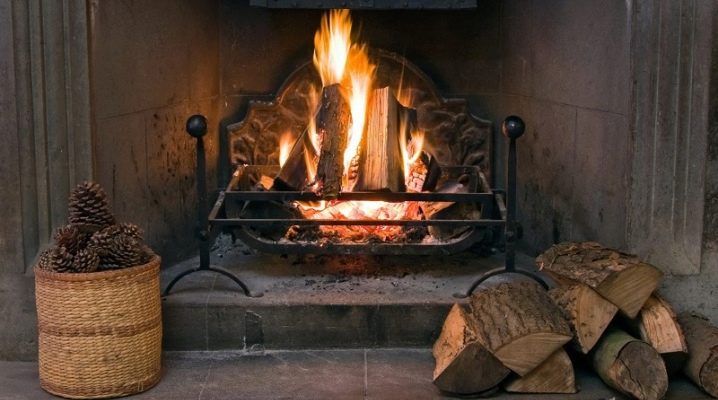
The burning temperature of wood is not as idle as it might seem. A lot depends on the maximum flame temperature in degrees in air and in a bath, in a home oven. It has its own characteristics in the fire and on the grill, and everywhere there are its optimal indicators.

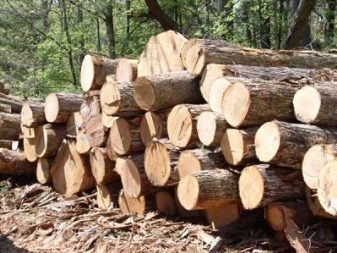
Influencing factors
Wood moisture
It is easy to understand that the more moisture there is in the wood, the worse it will burn, and the lower the actual combustion temperature will be. A significant part of the heat is then spent not on the useful needs of those who light the fire, but on the evaporation of the liquid, which has a fair heat capacity. By default, water is a must-have for any wood. Even technologically dry (used for construction) lumber usually contains 10-15% water, and trunks and branches that have just been felled in nature are several times more saturated with it.
It is not surprising that even after high-quality air drying, firewood does not flash from a match or lighter like gasoline. They have to be kindled with special techniques. Suffice it to say that at 15% humidity, evaporation of all this water from 1 kg of firewood will require as much heat as is needed to boil 10 liters of ordinary water on a gas stove. In the fire, they usually put twice as much freshly cut firewood as would be required in advance prepared and dried properly. The same technique can be used when preparing barbecue on the grill.
However, the disadvantage is a significant excessive consumption of fuel. Heating a home in this way is not just time consuming. It will be necessary to clean the pipes and chimneys of the accumulated soot too often. An alternative solution is to dry the wood yourself; in 1 year they can be brought to a moisture content of 20%, even by simply storing them in a woodpile under a canopy.
Some people prefer to buy firewood that is already thoroughly dried.
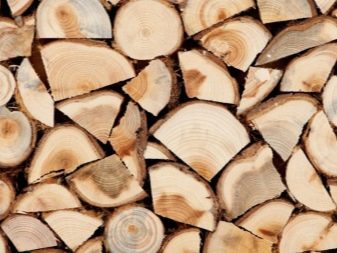
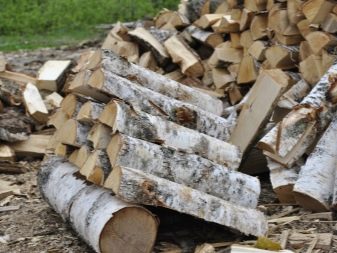
The size
But the combustion temperature (the degree of heating of the tongues of flame) depends not only on the saturation with water. Very large logs keep a significant part of the heat inside and give it off unevenly. Very small ones "puff" and give out warmth in a matter of minutes. More or less stable heating provides only medium-sized fuel with uniform dimensions. This moment is especially important for a bath, where comfortable conditions largely depend on the constancy of heating.
It is necessary to remember about the influence of the bookmark. When placing firewood in a fireplace or stove, it is not necessary to put it tightly. If possible, fill more than 1/3 of the total should be avoided. Otherwise, it will not be possible to guarantee normal traction and optimal combustion. It can be said more precisely only taking into account:
- type of hearth and features of its design;
- fuel quality;
- wood species.
In any case, the larger the size of the log, the drier the wood should be. Very large specimens fire slowly. Their burning is also slow. Chopping wood into small logs, you can:
- accelerate the evaporation of water;
- activate the flow of air to the combustion centers;
- increase the release of pyrolysis gases;
- increase the temperature inside the fire, stove or fireplace.
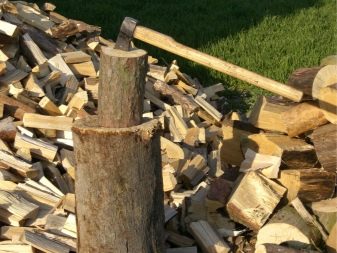
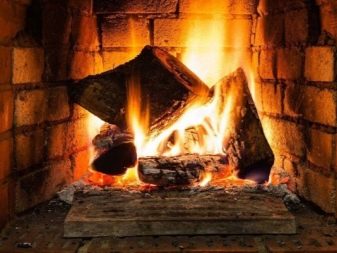
Combustion temperature of different rocks
But one must understand that it is necessary to compare different types of wood in terms of combustion temperature. The density of fibers, their chemical composition and other nuances directly affect the intensity of heat generation. The maximum temperature when burning oak wood is 900 degrees, 75% of the released heat goes out.The birch also burns quite hot, but in the flame of burning wood from it the temperature reaches 816 degrees. For pine firewood, this figure is 624 degrees. Alder is even colder at 552˚C. Spruce wood gives out tongues of fire with heating up to 600 degrees. The hottest type is beech and ash (up to 1044 degrees). The hornbeam burns at a slightly lower temperature - 1020 degrees. Its average value is 865 degrees. In other cases:
- 660˚C - when burning linden;
- 612˚C - when using aspen;
- 468˚C - when using poplar.
Beech, larch, hornbeam and oak wood are rarely used. The only exception is waste from the processing of such material. At home and in saunas, birch firewood is the best choice. They burn the hottest in comparison with other common types. Coniferous wood is somewhat less popular. But all this is still not enough to say what the optimal wood should be to achieve a specific temperature. So, spruce, fir and pine, although they burn hotter than alder, are sometimes shot with resin. This problem is also common for larch, which reduces its popularity in comparison with birch. Beech almost does not produce sparks and gives off the maximum share of heat to the outside.
It is beech wood that is practically a reference in relation to other species. The aroma from her is perfectly perceived by people. No wonder just such a tree is used when smoking meat and other products. Oak, although it allows you to get almost as much heat as beech, leaves a significant amount of ash behind. For stoves, this is still not so important, but in fireplaces and barbecues it is completely unacceptable. Along with beech wood, ash wood can be used in fireplaces. It burns at 1040 degrees. The advantage is the absence of firing sparks. The hornbeam burns at 1020 degrees and produces a lot of heat. It will burn for a long time, creating a visually pleasing flame. Acacia also burns for a long time. When it is burned, a temperature of 700 degrees is generated. Drying acacia wood is easy. It crackles on fire, which many people like. The burning temperature of alder, poplar and aspen does not exceed 600 degrees, therefore firewood made from them is waste, used occasionally.
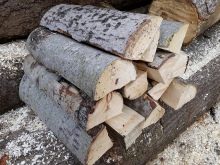
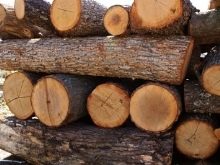
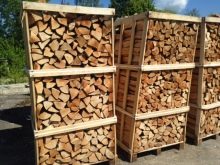
Determination of temperature by color of combustion
But knowing to what extent a fire can be heated is not enough. It should be understood that in specific conditions this indicator is significantly different. A rough estimate of the degree of heating will help the color of the flame. Where combustion is most active, it acquires a white or rich yellow color. Rising higher, the fire has an orange tone, which just indicates less heat release.
Bright red hues are characteristic of the top of the flame. Above them, only smoke is already visible, and sometimes also vibrations of heated air. If the flame shines with a dull red light, then the temperature in it reaches "only" 500 degrees. A dark cherry color is typical for areas heated to 800 ° C, and a thousand-degree fire zones are also cherry, but already noticeably brighter. Sometimes red-orange flashes can be seen in a fire or in a stove. We can assume that they are warmed up to 1100˚C. A deep orange color indicates that the temperature is 100 degrees higher. White-yellow fire occurs at 1300 degrees, and plain white at 1400 degrees.
But this is rare, like a bright white color - it speaks of warming up to about 1500 degrees; considered ideal birch firewood burns in the usual yellow color.
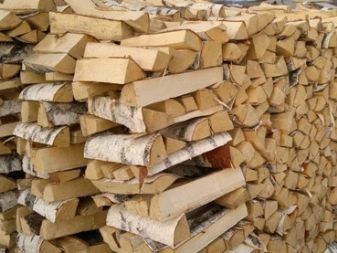
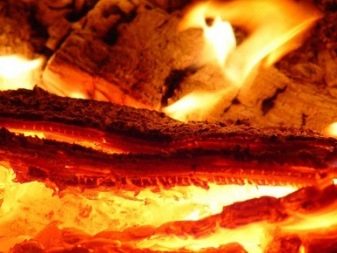
How to measure?
Color can say a lot, but not everything. It varies depending on the fuel used, on its moisture content and even on the intensity of air movement. And therefore, one can only roughly speak about the temperature of the fire using it. It can be accurately determined only with the help of specialized equipment (pyrometers). Professional pyrometric equipment works without direct contact with the flame.
The measurement is based on the intensity of infrared rays. The measurement can be carried out at any distance provided there is a direct line of sight for the device. Therefore, in conditions of strong smoke, the pyrometers do not work or give incorrect readings. In most cases, the temperature of the fire, according to the measurement results, ranges from 750 to 1200 degrees. Whether the flame is burning in a fireplace, in a fire or in a stove does not matter.
The combustion temperature is highly dependent, however, on the design of the hearth. It is the design that determines the rate of oxygen supply. In massive stone stoves, the fuel burns as completely as possible, but the process is prolonged, and therefore the degree of heating decreases. Stove stoves and similar structures made of a thin sheet of steel also allow you to burn wood with almost no residue, but the heat comes out instantly, and therefore the stove heats up and cools down quickly.
In high-quality furnaces, you can reduce the supply of oxygen. This allows the wood burning temperature to be increased. Heat transfer in this case will decrease. If wood burns in open fireplaces, the properties of the chimney are of decisive importance. It is they who determine the traction parameters.
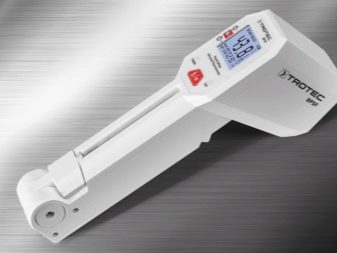

It should be noted that its temperature differs markedly in different phases of combustion. At 120-150 degrees, the tree only charred. If the heat continues to flow, then the resulting charcoal will ignite on its own. Then comes the moment of flue gas ignition. They undergo thermal decay and cover the entire area, after which a flash occurs.
The fire then has a light yellow color. The main ignition occurs at 450-620 degrees. At a time like this, decent traction is essential. Combustion itself is divided into smoldering and fiery combustion. As soon as the fuel runs out, oxygen supply stops or the temperature drops, the flame goes out.
The exit to the temperature bar required for ignition is predetermined by:
- shape and bulk density of a piece of wood;
- its saturation with water - inside and outside;
- placement in relation to the air flow;
- by air thrust.
It is curious that round firewood burns worse than those with clear edges. Planed wood burns more slowly and at a higher temperature than samples with an untreated surface.
It is also worth noting the different cost of firewood. It would be technically practical to use the same beech for heating a bathhouse or at home, but it is unprofitable financially.
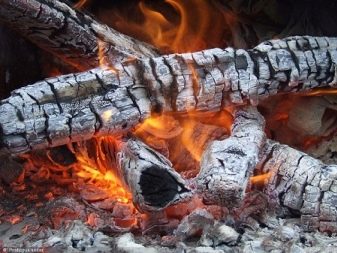
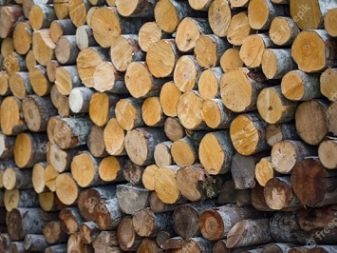













The comment was sent successfully.